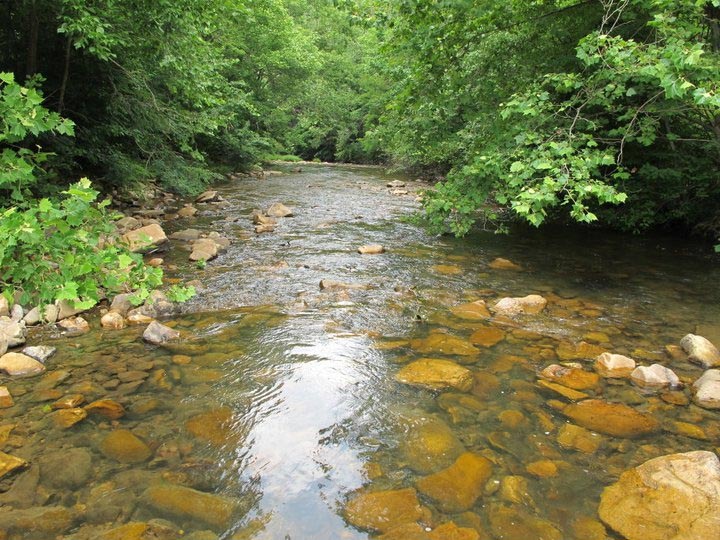Deeply wrinkled with a dappled, muddy hue, the skin of the eastern hellbender—the giant Appalachian salamander—also serves as its lungs. This “water-breather” absorbs oxygen through its skin from the cool, fast-flowing mountain streams in which it lives. As a result the hellbender is extremely sensitive to its environment, be it the temperature of its water, pollutants, oxygen content or acidity.

A wild hellbender captured and released during a recent survey in southwest Virginia. Click photo to enlarge. (Photos by J.D. Kleopfer, Virginia Department of Game and Inland Fisheries).
Now, a new study of hellbenders by scientists at the Smithsonian Conservation Biology Institute will place these amphibians at the center of the conservation of Appalachian salamanders. The Appalachian region has the greatest diversity of salamanders in the world. Some 76 different salamander species live in this area, and most are found nowhere else in the world. With a warming trend of between 2 and 6 degrees Celsius predicted for the coming century, biologists are concerned about the future of these amphibians, many of which live in cool microclimates.

Kimberly Terrell of the Smithsonian and Bill Hopkins of the Department of Fish and Wildlife Conservation at Virginia Polytechnic Institute, snorkel for hellbenders during a recent survey in southwest Virginia.
To better understand how hellbenders will respond to global warming, scientists at the Conservation Biology Institute plan to monitor a population of hellbenders in laboratory tanks at the Reptile Discovery Center of the Smithsonian’s National Zoological Park in Washington, D.C. Conditions in the tanks will reflect the short-term temperature fluctuations, seasonal temperature variation, and the overall warming predicted for coming decades.
Scientists will closely follow the physiology of the hellbenders under these conditions to determine how warming effects them, if at all—be it stress, slowing of their metabolism or changes in their immune system.

Bill Hopkins swabs a wild hellbender held by Kimberly Terrell to test for the presence of the chytrid fungus. The animal was safely released.
“Global warming is considered the primary threat facing Appalachian salamanders,” says Kimberly Terrell, a researcher at the Center for Species Survival at the Conservation Biology Institute. “Yet there is almost no information regarding the physiological effects of temperature change in these species.”
A second part of the study will include a survey of wild hellbenders in streams in Tennessee, Virginia, West Virginia and Pennsylvania. Hellbender health and habitat data collected from these surveys—such as water temperature, pH, dissolved oxygen levels, pollutants—will be integrated with the laboratory data to determine how these factors might combine with warming to undermine hellbender fitness. The survey also will include tagging the animals and testing individuals for Batrachochytrium dendrobatidis (also known as Bd or the chytrid fungus), a devastating pathogen that has driven dozens of amphibian species to extinction. The ability of this fungus to cause disease in the eastern hellbender is unknown. The Smithsonian is partenering with the Virginia Department of Game and Inland Fisheries on the project research and surveys.
Data from a previous health assessment survey of hellbenders, conducted from 2006 to 2009 by Barbara Wolfe, Director of Conservation Medicine at The Wilds (Cumberland, Ohio), also will be integrated into the study.
Since the 1970’s, hellbender populations have mysteriously declined in several portions of their range, Terrell explains. “By establishing a set of known constraints to adapting to climate change in these animals, our research can help determine the causes of recent declines, warn us of future declines in certain areas and help inform conservation management plans for all Appalachian salamanders,” Terrell says. “Hellbenders are an ideal model species for dozens of other Appalachian salamanders.” –John Barrat





